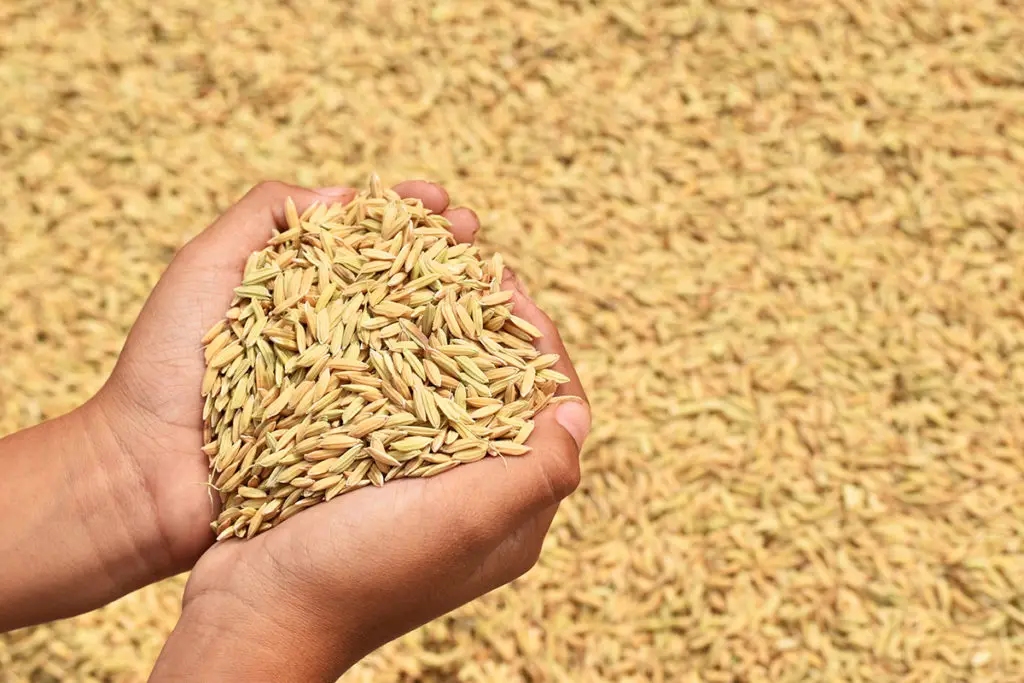If you love a glass of hard root beer, you’ll be thrilled to know you can make the refreshing drink yourself from the comfort of your own home. After gathering the right components for your hard root beer, making it will be a breeze.
Here’s how to make hard root beer at home:
- Gather your ingredients.
- Steep the grains.
- Add spices.
- Prime the bottles.
- Boil again.
- Cool and transfer.
- Ferment.
After going through this quick process, you’ll be able to enjoy a high-quality beverage made precisely to your liking. In the following sections, you’ll learn how to go through each of these steps in order to get the best possible results.
1. Gather Your Hard Root Beer Ingredients
The most crucial step of this process, and arguably the hardest, is gathering the necessary ingredients. I say this process is challenging because you might have to look for a few of the components in a specialty beer supply store, as the average supermarket doesn’t carry most of them.
Here’s what you’ll need to make the root beer (3 gallons/11.36 L):
- 2 lbs (0.91 kg) dried malt extract*
- 1 lb (0.45 kg) cane sugar
- 1 lb (0.45 kg) lactose
- 4 oz (118.29 ml) dried sarsaparilla root
- 2 oz (59.15 ml) dried spikenard root
- 2 oz (59.15 ml) dried burdock root
- 1 oz (29.57 ml) dried wintergreen leaves
- 1 oz (28.35 g) hops
- 0.5 oz (14.17 g) dried licorice root
- ½ tsp (2.84g) yeast nutrient
- Fermenting ale yeast (you can also use Champagne)
- Vanilla extract to taste
*Dried malt extract is the ideal choice for making root beer. With that said, if you have trouble finding this ingredient, you can also use molasses for a similarly-textured but sweeter end result.
2. Steep the Grains For Your Hard Root Beer
Now that you’ve gathered your ingredients, you can start the steeping process.

BEER DROP: Boxes of beer from Award-winning microbreweries → Join The Club
To do so, take out the grains you want to use and finely crush them. Afterward, take a big pot that can comfortably accommodate 1 ¾ gallon of water (8 L) and fill it up.
Place the pot over medium heat until the water is thoroughly warm. Stir in the malt extract until it completely dissolves, then add the sugar and lactose and thoroughly mix them in. Slowly bring the mixture to a boil to make sure that all the ingredients have time to fuse.
3. Spice Up Your Hard Root Beer
At this point, you’re ready to add your spices and flavorings. You can incorporate the herbs, hops, and spices that I listed in the ingredients list, but you can also opt to customize your root beer by adding your own unique flavorings.
Don’t hesitate to experiment, as some flavors might work better than you’d think.
After you’ve added everything you need, give the liquid a thorough mix to make sure that the taste and aroma dissolve consistently throughout the beverage. Keep the mixture to a boil for a few more minutes.
Now you can add the vanilla extract to taste along with the yeast nutrients listed. Mix again and let boil for an additional five minutes.
4. Prime the Bottles For Hard Root Beer
At this point, you’ll have to sanitize the mixture one last time before cooling and bottling it.

Before doing so, you may want to prime the bottles you’ll be using beforehand. This step is optional, but it’s crucial if you’re going to properly back sweeten the end result. I highly recommend doing so, as your root beer will taste much more authentic and complex if you take the time to add in this extra step.
If you want to prime your bottles, you’ll need to mix molasses and water at a 2:1 ratio to create enough solution to fully cover all the bottles you’re planning on using.
Remember that you’ll roughly need an ounce (29.57 ml) of solution for each liter of the bottle’s volume. For example, if you have a 2-liter (0.53 gal) bottle, it’ll account for approximately 2 oz (59.15 ml) of your priming solution.
After deciding on the ideal amount for your needs, take this mixture and boil it for a few minutes beforehand, as it should also be thoroughly sanitized. At this point, all you need to do is pour the solution into each bottle, and they’ll be primed and ready to be used when the root beer is prepared.
5. Boil The Hard Root Beer Wort Again
Even though reboiling might seem like overkill to some, it’s crucial to make sure that the final drink is safe to consume. Therefore, to thoroughly sanitize the prepared mixture, all you have to do is place it over medium heat again and boil it for an additional 30 minutes.
Make sure not to leave the pot much longer than that on the heat, as, at this point, the mixture can be very susceptible to heat.
Given that it contains a high amount of sugar and malt, leaving the concoction too long on the stove can make the end result too thick or sweet to be consumed as a root beer, so don’t neglect the pot during this time.
After the mixture has boiled and reached your desired consistency, you’ll need to strain out the herbs, grains, and spices you’ve added to make sure it gets to a drinkable state. By this point, they have left behind enough tastes and aromas and don’t serve any other purpose.
If the liquid has evaporated too much and doesn’t seem to be enough to fill out your bottles, make sure to top off the mixture with more water (make sure to allow the new water to boil as well) until you reach your desired amount.
6. Cool and Transfer The Hard Root Beer To Bottles
Your root beer is now almost ready to ferment. At this point in the process, patience is crucial. Even though you may be tired and can’t wait to enjoy the fruits of your labor, you’ll need to give the beverage time to fully develop into what it’s supposed to be.
The first thing you need to do is allow the scalding hot mixture to cool at room temperature. Afterward, you can proceed to bottle your beer as you would with any other recipe. I want to reiterate the importance of using thoroughly sanitized and primed bottles during this process.

Speaking of bottles, you should make sure to choose them carefully, as you want a model that can withstand the pressure that’ll gradually increase from the building carbonation.
For example, these No products found. from Amazon.com are ideal for this purpose. They’re easy to seal and open, making them very effective in capturing enough carbon dioxide inside to create a perfectly fizzy hard root beer.
With that said, as you’ll see in the following section, you have to keep an eye on carbonation levels during the fermentation process, as too much pressure can cause the bottles to break altogether.
7. Ferment To Make The Root Beer Hard
You’ve made it to the last step of the process, but this point requires an even greater level of attention and supervision, as if done incorrectly, it can make all your hard work go to waste.
Knowing how to store your root beer to guarantee perfect levels of fermentation can be tricky, especially for those trying out this recipe for the first time. But with a few pointers and tips in mind, you can make an excellent hard root beer even on your first try.
The temperature of your kitchen or the space you’re planning to store the bottles in plays an essential role when it comes to the time you’ll need to let the beverage ferment. As a general rule, when placed in a warmer environment, the beer requires less time to ferment and carbonize.
As I previously mentioned, you’ll want to keep an eye on carbonization levels to make sure your bottles don’t turn into a root beer bomb.
Having said that, this phenomenon is generally less likely to happen when making hard root beer as opposed to its soft counterpart. In short, don’t worry too much, but still, pay adequate attention.
If you’re still worried, you can store the bottles in your refrigerator, which helps combat over carbonization due to the lower temperatures. Keep in mind that choosing this approach will also mean that you’ll have to wait a bit longer for the fermentation process to be completed.
Speaking of that, you’ll usually have to wait for 4-5 days for the primary fermentation to be complete.
Again, this is a loose suggestion as the specific timeframe heavily depends on the temperature your beer will be stored at. A great way to keep track of the gravity reading is by using a hydrometer. At the end of the process, the reading should come out at around 1.023.
Depending on the quality of yeast you’ve used, you may be able to consume the beverage right at this point.
On the other hand, if you feel the taste and texture aren’t there yet, you can allow it to go through a second fermentation process for an additional week or two until the hard root beer reaches your desired specifications.
Final Thoughts
Making hard root beer at home isn’t as challenging as you’d think as long as you have access to some specialty ingredients. If you can’t take a look at a local specialty store, there are plenty of available and reasonably priced options online as well.
After getting your hands on the right components, making an excellent hard root beer is a matter of following a few simple steps, adequate care, and patience.
